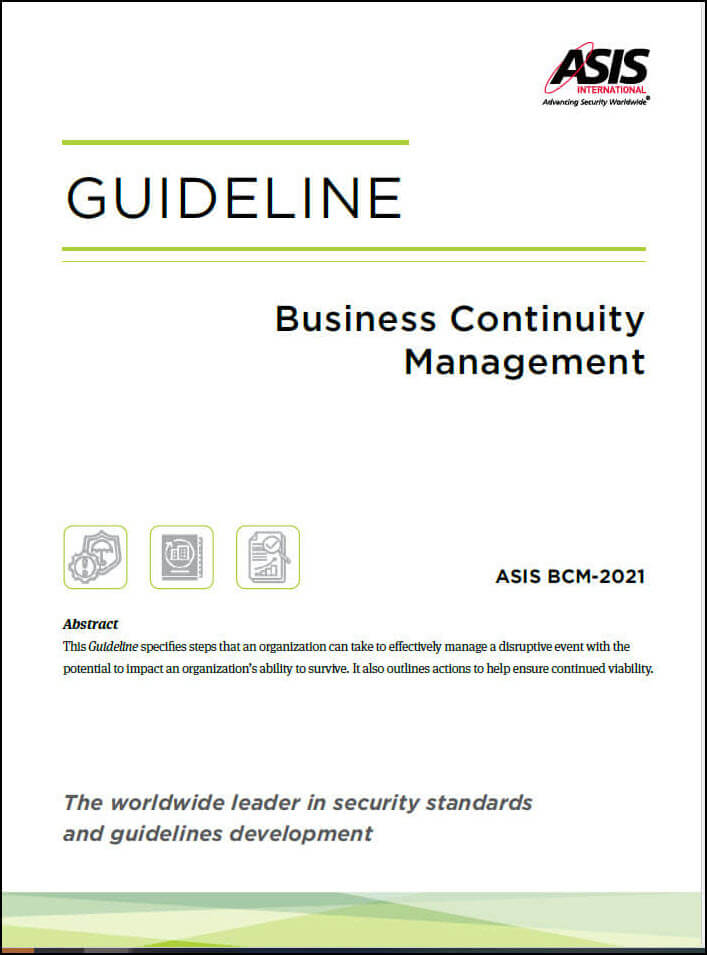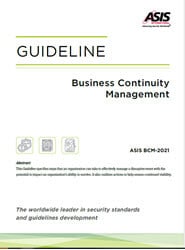Organizations of all sizes and types are susceptible to events that can disrupt operations—floods, tornados, terrorist attacks, public health emergencies, and more. To weather such crises, organizations need a business continuity management (BCM) program so they can recover as quickly as possible. This Guideline specifies steps that an organization can take to effectively manage a disruptive event with the potential to impact an organization’s ability to survive. It also outlines actions to help ensure continued viability.
About the Guideline
 Organizations of all sizes and types are susceptible to events that can disrupt operations—floods, tornados, terrorist attacks, public health emergencies, and more. To weather such crises, organizations need a business continuity management (BCM) program so they can recover as quickly as possible.
Organizations of all sizes and types are susceptible to events that can disrupt operations—floods, tornados, terrorist attacks, public health emergencies, and more. To weather such crises, organizations need a business continuity management (BCM) program so they can recover as quickly as possible.
Management must identify risks and create policies to address disruptive incidents that can threaten an organization’s ability to recover and survive. The process begins with a risk assessment and business impact analysis, keeping in mind the objectives of the organization. Personnel across the business may be called upon to help with the planning, including those involved in human resources, legal, facilities, IT, security, and finance.
The BCM plan should consider impacts on people, facilities, legal obligations, finances, reputation, the community, and the environment. It should determine the maximum allowable time to recover from an incident and provide avenues of communication to employees, stakeholders, and the media.
Once a plan is in place, management should monitor the many facets, reviewing and testing it regularly and making improvements as needed.
Related Content
 Advanced Concepts in Business Continuity and Crisis Management
Advanced Concepts in Business Continuity and Crisis Management
This presentation looks at the critical link between Business Continuity and Crisis Management and challenges the notion that traditional plans are equivalent to readiness. Rather, I propose that security managers are in a unique position to drive value to their organization throughout a CM/BC planning process (not just at the end, or when something bad happens), and offer strategies for doing so.
 Natural Disasters: When an Organization is Most Vulnerable
Natural Disasters: When an Organization is Most Vulnerable
Speakers will walk through assessments that can be conducted, as well as preparedness, mitigation and business continuity activities that can be developed and implemented to best address times when natural disaster incidents impact our organizations.
 Providing Better Value Through Technology: Security-as-a-Service
Providing Better Value Through Technology: Security-as-a-Service
Over the past year, the expectations of security operations have evolved significantly, and security officers have been at the frontlines since the very beginning. Security organizations are being asked to provide more coverage all while trying to deliver service excellence.
During this webinar our panelists, James Benum, Chief Product Officer at TrackTik, and Stan Partlow will discuss how security organizations can provide better value to internal and external stakeholders through technology.

